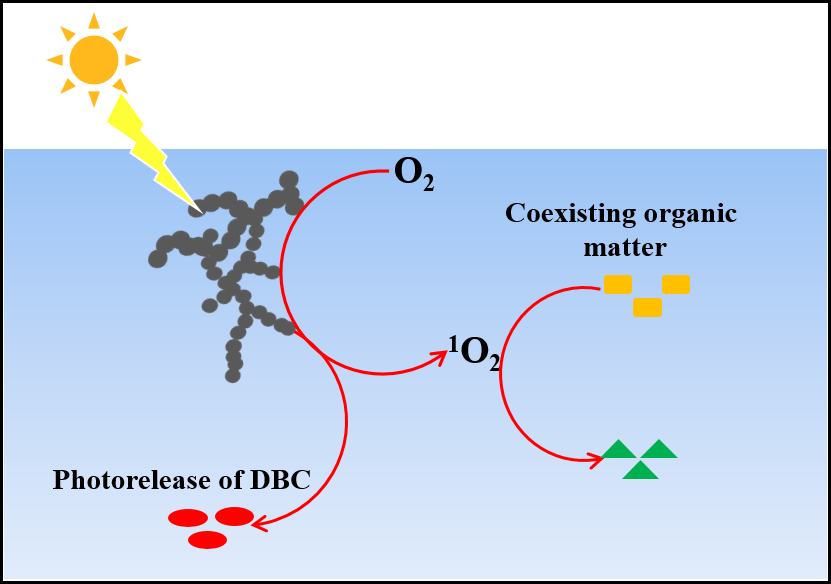 Contact
Contact
Zhongguancun North First Street 2
Beijing, 100190, PR China
Institute of Chemistry,CAS
Group of Photocatalysis and Environmental Photochemistry
Tel:010-82615942
Fax:010-82617315
Email:jczhao@iccas.ac.cn
 Introduction
Introduction
The environmental problems caused by organic pollutants are becoming more and more serious all over the world. The interests of our group are focused on the novel approaches for the photodegradation of environmental pollutants, photochemical cycling of iron species and the relative environmental photochemical processes, novel photochemical approaches for the detection of trace hazardous compounds, and photocatalytic selective oxidation of organic compounds. We have published over 400 papers in well-known international journals, such as J. Am. Chem. Soc., Environ. Sci. Technol., Angew. Chem. Int. Ed., and have more than 30000 citations by others. We have been awarded with several prizes such as the Second Grade National Prize of Natural Science of China , the Japanese Photochemistry Association Lectureship Award for Asian and Oceanian Photochemist (2010) and the Award of Excellent Young Scientists of Chinese Academy of Sciences- Bayer. Team members include 9 professors, 1associate professors, 6 postdoctors and 48 graduate students.
 Latest Research Progress
Latest Research Progress
Photochemical Aging of Soot in the Aqueous Phase: Release of Dissolved Black Carbon and the Formation of 1O2
The photochemical aging of soot in the aqueous phase could have an important influence on water environments such as fog water and wet aerosols in the atmosphere, as well as lakes and oceans. In this study, we systematically investigated the photochemistry of soot in the aqueous phase. Soot releases dissolved black carbon into the aqueous phase during photoreactions, which is attributed to the phototransformation of the nonpolar unsaturated C-H species in soot to polar carbonyl-containing species. More importantly, we found that soot suspensions, particularly those of the dissolved part of soot, were effective photosensitizers for the generation of singlet oxygen (1O2). The 1O2 apparent quantum yield of the dissolved part reached 33 ± 2% under 377 nm irradiation, which is an order of magnitude higher than those of most types of well-studied dissolved organic matter in water. As a result, soot could impact the environmental fate of coexisting organic contaminants, such as the photodegradation of bisphenol A. This study will not only give insight into the photochemistry of soot in the liquid phase but also reveal the significant implications of soot photoaging in the aqueous phase by the release and degradation of organic matter. (Environmental Science & Technology, 2019, DOI:10.1021/acs.est.9b02773)
 Research Progress
Research Progress
内容
Polybrominated diphenyl ethers (PBDEs) have aroused global environmental concerns because of their toxicity and ubiquitousness in the biological and environmental systems. It is important to find an efficient method for their decontamination and to understand their chemical transformation in the environment. Recently, we report that decabromodiphenyl ether (BDE209) undergoes efficient reductive debromination reactions under visible-light irradiation (≥420 nm) in the presence of various carboxylate anions that are common in the environmental media. The debromination reactions occur in a stepwise manner, producing a series of lower brominated PBDE congeners. Solvent-derived radials are observed by spin-trapping electron spin resonance experiments during the photoreaction. Further experiments by the UV−vis absorption and isothermal titration calorimetry, combined with theoretical calculations, reveal a new photochemical debromination pathway based on the halogen binding interaction. According to this pathway, the formation of halogen-binding-based complex between PBDE and carboxylate enables the visible-light absorption and debromination of PBDEs, although neither PBDEs nor carboxylates have visible-light absorption. The halogen-bond-based photochemical debromination could find its application for our better understanding of the transformation process of PBDEs in the environment. The results has published on Environ. Sci. Technol.(2013, 47, 2370−2377)



